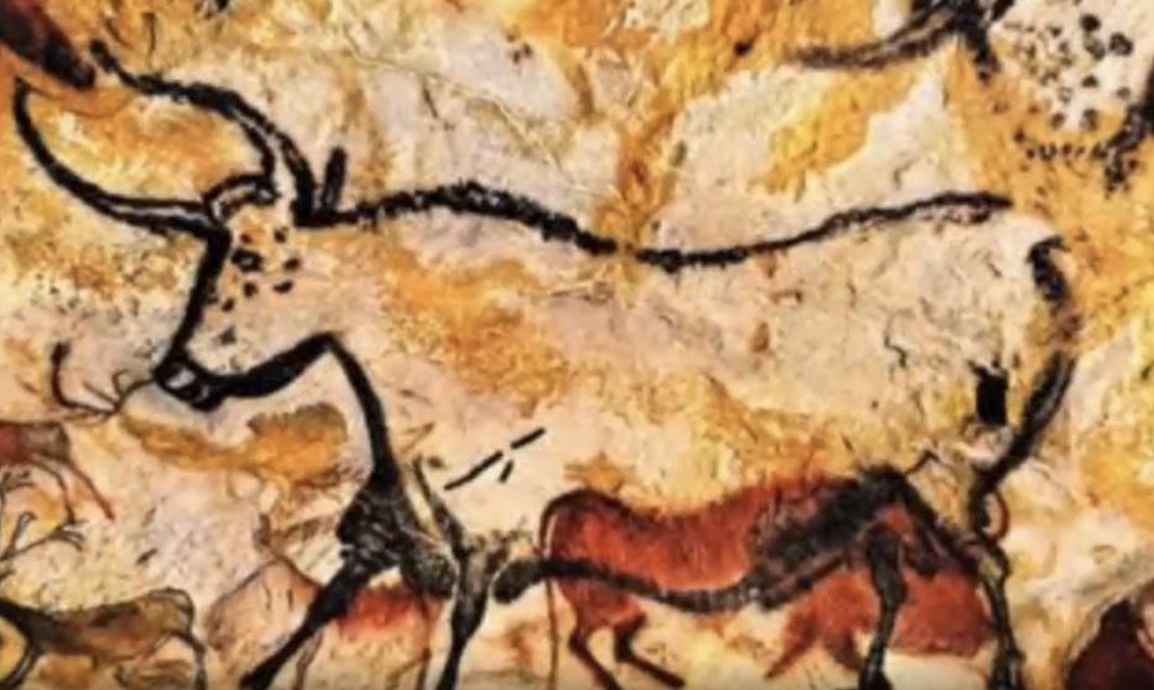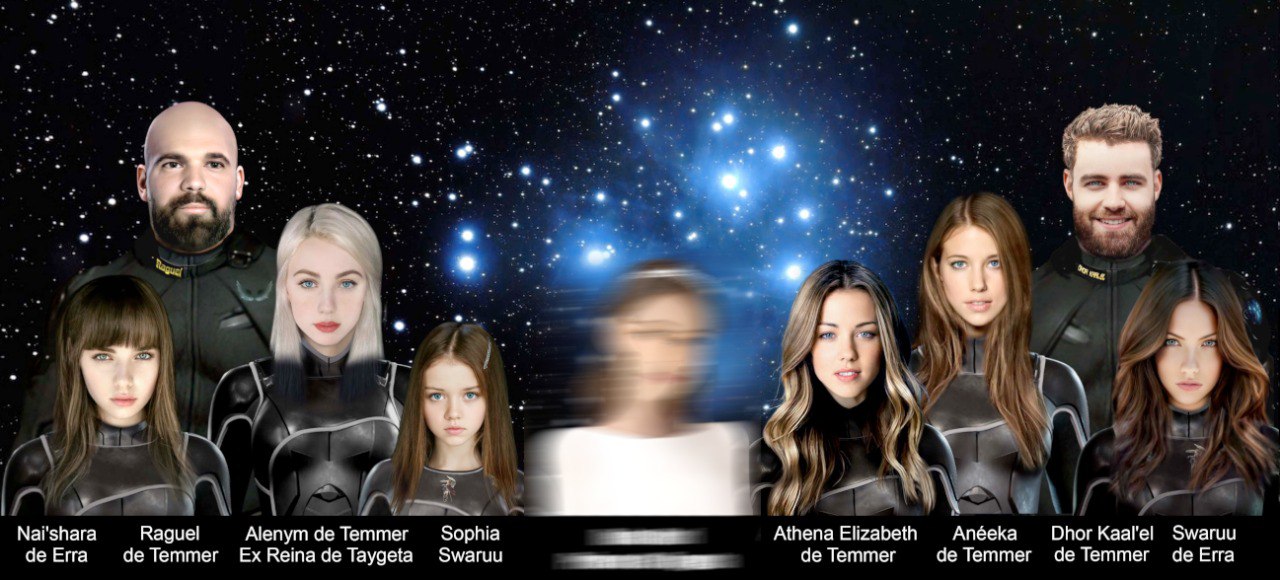Expansion of Lyra - Orion Wars - Part 2 **Text only / Translated originally from Spanish**
SE PUEDE ACCEDER A ESTAS TRANSCRIPCIONES PARA REALIZAR LAS TRADUCCIONES A
CUALQUIER IDIOMA (en texto o video) SIEMPRE Y CUANDO ESTÁN ACOMPAÑADAS CON
EL CRÉDITO OFICIAL A ESTA PÁGINA WEB Y CANALES DE YOUTUBE DONDE FUERON ENCONTRADAS.
Bajo ningunas circunstancias se permite publicar la información presentada en
nuestros canales y en esta página para propósitos comerciales (venta de libros
y materiales promocionales).
Autora/Autor
ATTACHE, englishPublicada/Publicado
July 09, 2020Expansion of Lyra - Orion Wars - Part 2 **Text only / Translated originally from Spanish**
Interviewer: The dates I will give below are only approximate, they are only a reference to be able to understand the story in a human context.
Yazhi: 40,000 years ago the Solar System was somewhat different. The planets were closer to each other because the energetic and gravitational dynamics were different due to the presence of Tiamat, a planet that is not there today.
The Solar System had 13 planets orbiting the Sun. The planets starting from the closest to the Sun to the farthest were: Mercury, Venus, Earth, Mars, Tiamat. Today their remains present in the asteroid belt: Jupiter, Saturn, Uranus, Neptune, Pluto, Ohalum. For terrestrial science: Eris 13 61 99, Haumea and Makemake. All planets harbored complex life either on the planet itself or on its moons or on both.
For the Federation, 13 planets are accepted as such since what determines whether an object is or is not a planet has or must fulfill different qualities or characteristics for one or the other. For terrestrial science, it is based more on the size and relevance of the object. For the Federation, on the other hand, it depends more on its importance in sustaining life.
In the case of Venus and Earth, they were inhabited by many anthropomorphic races similar to the Lyrian, hence the remains that archaeologists call the ancestors of the modern human. The best known is the Neanderthal, but there were more: Homo erectus, Homo habilis, among others.
In the case of the Neanderthal, they were not as described. They had a highly evolved society towards spirituality and harmony with nature. They were not very evolved technologically, but spiritually, very loving with their kind and with animals and plants.
Tiamat, a large planet with a high percentage of water, about 90% of its surface and with small islands, was inhabited by countless aquatic beings. Some were Sirian based with very advanced intelligence and cultural development. Today, there are no records of their culture or their degree of advancement since everything was destroyed.
The planet Ohalum, for Earth Eris, has a high life content. At that time it was inhabited by an advanced civilization of the insectoid type, the Mantis, still present there today. They also have there their Council, the Ohalum Council, where all their political movements, communications and alliances with other groups of Mantis races or of the advanced insectoid type are centered. Their political structure is: hive mind with a queen, just as the bees would have it.
At that time, a group of Mantis separatists from the Ohalum Council had a fairly large colony or base on Mars. Today they are still on Mars, but they are only Ohalum colony in full cooperation, part of their civilization.
The most advanced race in the Solar System in those days were the Karistus, inhabitants of Jupiter and its moons. They are still there today.
The rest of the Solar System was inhabited as today by an infinity of species mostly related to the word "animals", with no degree of cultural evolution. All the Solar System, its biology, was in the 5th density, including also the Earth, except for the Karistus that were and are in the 6th density.
At that time, Earth was also a very different world than it is known today. It used to be the way Tolkien describes it in "The Lord of the Rings" and "The Hobbit." The surface was covered with vast forests. They had large distances in plains. There were few seas and many lakes. You could walk around the globe, although it took years. All those distant lands full of mysteries and full of memories are now covered with water.
The Earth had five more continents, now submerged under water: Appalachia, Fennoscandia, Oceana, Tirannia and Beringia. If you looked up at the sky, you could see Tiamat, the water planet. It looked as big as the Moon looks today. They called it the Moon.
Saturn's rings could be seen in the distance at such close range that they were observable with the naked eye without anything, just with the human eye. There was also ice at the poles, but much less as the Earth contained less percentage of water.
In addition, the poles were at different points. The South Pole was at the position where Australia is today, at that latitude. That means that what is now Antarctica was ice-free in places, and that is why this continent contains so many archaeological remains of ancient civilizations.
The poles have changed their position countless times in Earth's history, as have its inhabitants. Millions of civilizations have been born on this planet. They have grown, flourished and disappeared. All advanced, all with wise people. Many interstellar. It is an eternal cycle. Today, all of them are buried in the sands of time.
What terrestrial science catalogs as "Homo sapiens" are Lyrians. That is to say that "Homo sapiens" sapiens, or modern man, has its origin in Lyra and is not native to this Solar System. Other anthropomorphic races such as Neanderthal, Homo erectus or Homo habilis are not Lyrian, although they look similar.
There are many races in our galaxy similar to the Lyrian race, so many variants that they blend into each other. There are races seemingly identical to the Lyrians, there are races slightly different, distinctly different, very different, to the point of being lost in all other non-human appearances. So again, Lyrian is the one that comes from Lyra.
And both the origin of Earth and the Lyrian origin is much older than science can calculate.
Origin of the Human Being
Yazhi: 40,000 years ago our galaxy continued to be threatened by the Orion Council. The Lyrian race was being heavily persecuted. The Reptilians´ objective was the domination and control of the species for the purpose of exploitation. Either as the use of slaves for labor or as raw material. The Lyrian race was clearly regarded as inferior by the Reptilian members of the Council, as little more than livestock.
Meanwhile, the United Federation of Planets was gathering forces and confronting the Reptilian threat. At that time, the bloody hunt being coordinated by the Council members was bringing many civilizations, not just Lyrian, to the brink of extinction. One way or another, at that period in history, all races were under the scourge of Orion Council.
In that course of time, small groups of Lyrians had managed to reach the Pleiades cluster M-45 and settle in several of its solar systems and planets. They had settled mostly underground, under the fear of being discovered, and for many years their expansion and cultural development was really very limited, focusing mainly on hiding and preparing for defense.
Similarly in the terrestrial Solar System, a similar climax was in the air. The first humans from Lyra had settled mainly on Venus and Earth. They presented an advanced holographic society, with spaceports, they were a clearly interstellar civilization.
On Earth, they landed on the Appalachia continent, today's North Atlantic Ocean. They sought refuge under the Earth or in deep caverns. Since their arrival here, they coexisted and interacted for a long time with the native anthropomorphic races.
But the Lyrians were truly lost, frightened and desperate. Their ship had been disabled and left them on Earth with almost no equipment. They built observatories in order to fix their position on the star charts. They wanted to know where they were, what their exact position was in the space quadrant. It took them years, but they finally succeeded in finding their location.
Already feeling close to extermination, and in total desperation, they left messages, authentic star maps camouflaged in paintings. Trying to capture their history in case someday someone would find them and understand their messages. Not all cave paintings are hunting scenes. Some are, but some are not. The same happens with Stonehenge and other similar megalithic monuments that historians can't seem to agree on what function or purpose they were created for.
The Stonehenge stone formation, like other similar formations, was designed to observe the stars and to fix a position on star charts. The stones give a fixed and stable position in a 360-degree circle and so they could observe their movements across the sky.
They are built on powerful energy lines. That is, internal positive Black Goo flow points that create a magnetic flux in that area. The stones were placed with anti-gravity technology.
In the case of Stonehenge, the stones have been moved from their initial location and this has happened on several occasions. The last time they were moved was during their restoration between 1919 and 1960.
Regarding the cave paintings, the Lyrians tried to camouflage messages among what looked like everyday hunting scenes, somehow imitating the paintings made by the other anthropomorphic races that inhabited the Earth at that time, and thus prevent their messages from being captured and deciphered by the Reptiles. That was the idea, to confuse the enemy.
But they do not represent hunting scenes, they are authentic star maps with position movement vectors. Some paintings explain who they were, where they came from, what happened to them and where they were going. Each animal represents a star. Each large composite animal, a constellation. Each person running with a spear represents a ship. The spear indicates direction or vector. Their departure is where they came from. They all converge on Earth as their destination.
For example, in this painting:
Here the bull represents the constellation Taurus. Around his eye, the constellation Hyades. Behind the bull, on the buttock, there is a square. That is a portal out of this Sun, it connects there, it is a portal in the Sun that connects the constellation Taurus.
The message is: We come from the Hyades cluster of the constellation Taurus. We came here through a solar portal.
Not all cave paintings were painted by Lyrians, only some. As far as I know, they are not mixed in the same archaeological sites either.
Normally when an animal represents a constellation, it is looking to the left, except if the constellation is looking to the right, because from space the constellation looks the same as from Earth. Just in mirror view due to trigonometry effect.
In addition, some cave paintings are much older than terrestrial science catalogs them. Some place them at around 15,000 years old but, in reality, many of them are more than 50,000 years old.
This is because carbon-14 dating is often inaccurate. What happens is that carbon-14 is supposed to be bound to or present in certain organic compounds. So if you know the exact rate of degradation of carbon 14 with its state of degradation or decomposition, you can determine the age of whatever it is that contains it. That's the theory.
But it so happens that the decay of carbon 14 is not stable and is due to other factors such as, for example, exposure of the sample to other radioactive heavy metals, which makes carbon 14 extremely inaccurate.
Esta transcripción está disponible para descargar
file_downloadDescargar como PDF file_downloadDescargar como TEXTCommunity provided translations
Esta transcripción todavía no tiene traducciones proporcionadas por la comunidad

